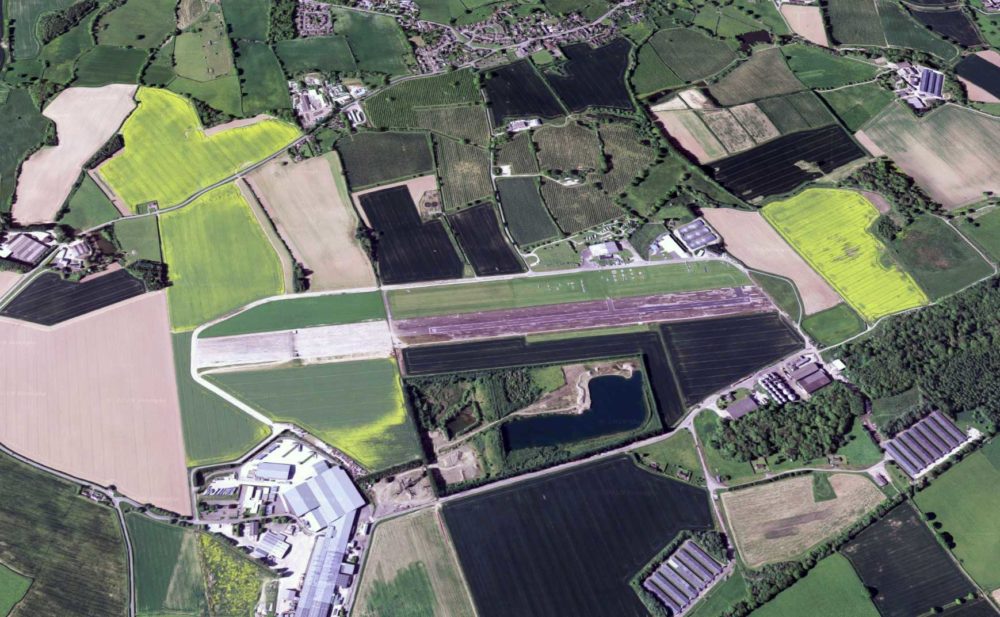Note: this is a follow-on post from this previous one (though this post does stand by itself too!) Please do also see the prior post to this as well - afterwards!
ENDLESS ARGUMENTS TAKE PLACE OVER FLAT vs SPHERICAL EARTH, BECAUSE IT'S VERY DIFFICULT FOR A 'COMMON PERSON' TO DEFINITIVELY PROVE EITHER WAY - HOWEVER THIS IS NOT THE CASE WITH STATIONARY EARTH vs SPINNING/MOVING EARTH, WHICH IN CONTRAST IS INCREDIBLY SIMPLE FOR A 'COMMON PERSON' TO PROVE 100% - AND THE MEANING/IMPLICATIONS ARE JUST AS INCREDIBLE & MIND-BLOWING!!!
Between age of 18-37 I was in love with, and totally obsessed by skydiving and parachuting - for its outrageous beauty mind you, not its thrills (i.e. flying with friends in freefall, in sunny blue skies, above puffy white clouds!). I have close to 500 skydives. I consider what I relate below provides 100% irrefutable proof that the earth is completely stationary (i.e. both direct experiential and mathematical proof).
On my first 10 jumps (as a beginner) I utilized a round canopy (as opposed to a square canopy which these days might have a high forward speed of up to 40-50-60 mph). For all intents and purposes this round canopy had virtually no forward speed whatsoever (though in practice they might have a forward speed of approx 1-3 mph relative to wind speed). So the round canopy just 'sat' in the air, slowly descending for a period of maybe 5-7 minutes. These first few jumps were done on very still (no breeze/wind at all), glorious summer evenings, above and into a lush green valley (where the runway/dropzone was, see the image below). Given the combination of factors it was extraordinarily quiet and still under the parachute and even from approx a thousand feet up, it was possible to hear people speaking/calling on the ground. The most important point I want you to grasp is that essentially, this chute descended straight downwards, because of there being no breeze, together with the parachute having no real forward speed (relative to either the air and/or the ground).
This was the airfield (see image below) - and the landing zone/spot was just above the middle of the runway on the wide grass area parallel to the runway ('opposite' where that horseshoe shaped bit of path is, which itself is adjacent to the two 'darker fields'). Because of their being no wind, I exited the aircraft almost precisely above the landing point - from about this height shown in the image - which for beginner static-line or free-fall round canopy jumps is typically about 2500-3500 feet. You can enlarge the image by clicking on it.
 Runway and dropzone from above (CLICK TO ENLARGE)
Runway and dropzone from above (CLICK TO ENLARGE)
How things went on multiple jumps at this location (under the conditions described above) was that as expected I just descended straight down from the aircraft exit point - to the landing zone. A descent on a round canopy from such an altitude takes approx 4-5 minutes. However according to calculations based on established 'scientific fact', things should have 'unfolded' as follows (and to make it simple to begin with, we will consider things as though I had been at the equator).
The result is (according to scientific fact and associated mathematical calculations) - that if the canopy ride lasted 5 minutes, then I should have landed approx 100 kilometers away from the landing zone (because of the earth turning below me while I was suspended in the air above the moving earth).
The math is as follows: 400 meters per second earth movement x 60 seconds x 5 minutes = 120 kilometers (74.5 miles)
This obviously represents a huge disparity between reality and accepted 'scientific fact', (i.e. 120 km/74.5 miles disparity). But amazingly, every time I have skydived I have landed right back where I started - even when I have opened the parachute way up high (e.g. 8000-10000 feet) and say had a 20 minute canopy ride down.
This in itself is total and absolute proof that the earth is not moving as is claimed (and it is a repeatable experiment, which is a vital aspect of the scientific process). Agreed the 400 meters per second needs adjusting for latitude as it is only at the equator that the earth is supposed to move 400 m/sec, but we will see to this next. [Note: the circumference of the world at the equator is 24000 miles, divided by 24 hours, gives 1000 mph. Converted 1000 mph equals 1609.34 kph. 1609.34 kph divided by 60 minutes and then 60 seconds, actually gives 447 meters/second!
How to calculate the speed of earth at various latitudes is described here: https://image.gsfc.nasa.gov/poetry/ask/a10840.html.
The dropzone concerned is at a latitude of 51 degrees - which using the method on the page linked above equates to a speed of 1050.96 kph (653 mph) or 291.9 meters/sec - so somewhat less than the 447 meters/second at the equator. So factoring in this adjustment - in fact the landing zone should have only been 87.5 km away (54.3 miles)!!!
Sure we should take off some of this distance to allow for fluid dynamics (as in the air wouldn't be totally stationary relative to earth's movement, but would be moving along with the earth - but nowhere near as fast as the earth, especially at 3000 feet plus high up).
So there we have it dear reader. Total and absolute evidence/proof for you (of the highest scientific standard). Though you don't need any such 'proof' from me - as I can assure you, you can totally trust you own senses that the ground has never moved under your feet (unless you have been in an earthquake) - and never will do so either :P
Please see this other post about stationary earth, which has a simpler but just as integral experiment described in it.
Extra!
Let us suppose the earth is rotating, just for the sake of discussion about aerodynamics/fluid dynamics of the atmosphere around it - (i.e. let's consider how the atmosphere/air would be expected to behave around a rotating earth).
 Hurricane Irma over Hispanola on September 7
Hurricane Irma over Hispanola on September 7
I think we can presume that the air flow would be very similar to the above image - imagining that the rotating earth is in the center spinning (with us looking at it from above the north pole). When standing still on the earth, the wind would be traveling (relative to us) slowest right by the earth and would progressively speed up relative to our position the further we moved upwards in altitude (i.e. the air closest to the earth would be being pulled along with the earth, and so relatively would be traveling at less speed than the air further away from the earth).
You can see this on the hurricane image above, where if you imagine the small hole/eye in the center is the earth, then the air that is closest to the eye is 'spinning' around with the eye at a faster rate than the air further away and to the outside edge of the hurricane. But absolute and relative speeds are reverse each other here. Whereas the absolute speed of the air on the outside of the hurricane is blowing slower, relative to the eye it is going much faster (as in the eye might spin several time and the outside air hardly move at all). And vice-versa for the air near the center - relative (to the eye) it is much slower/lower, but in an absolute sense it is blowing much faster. Hence the worst of a hurricane being either side of its eye (aka, the eye of the storm).
Given the supposed constant speed of the earth of approx 1000 mph at the equator (447 m/sec), even though the air would be slowed down (relatively) considerably right by the earth (due to friction) we can still reckon on it being hurricane speed all of the time - and always blowing in one direction only.
The idea that there would ever be continuous days with no breeze whatsoever is really a non-starter - as would the wind blowing in completely different directions for extended periods of time.
Just a reminder about the prior post to this one - which can be found here.
ADDENDUM:
I consider the 'best' criticism yet of my proof above was made by an individual who stated that of course what I experienced/documented above will happen, because the air is moving at the same speed as the ground (i.e. the earth and all the air (at least up to skydiving height of 16,000 feet) is spinning with the ground exactly).
However, this criticism is extremely simple to dispense with because if that was the case, then whereas the speed of an airplane traveling from the US to Europe could indeed be the expected approx 500 knots/h, going the other way, to achieve the same flight time between the two same locations, the airplanes speed would need to be approx 1300 knots/h (i.e. 500 + the speed necessary to overcome just the air moving with the ground which is approx 800 knots/h).


